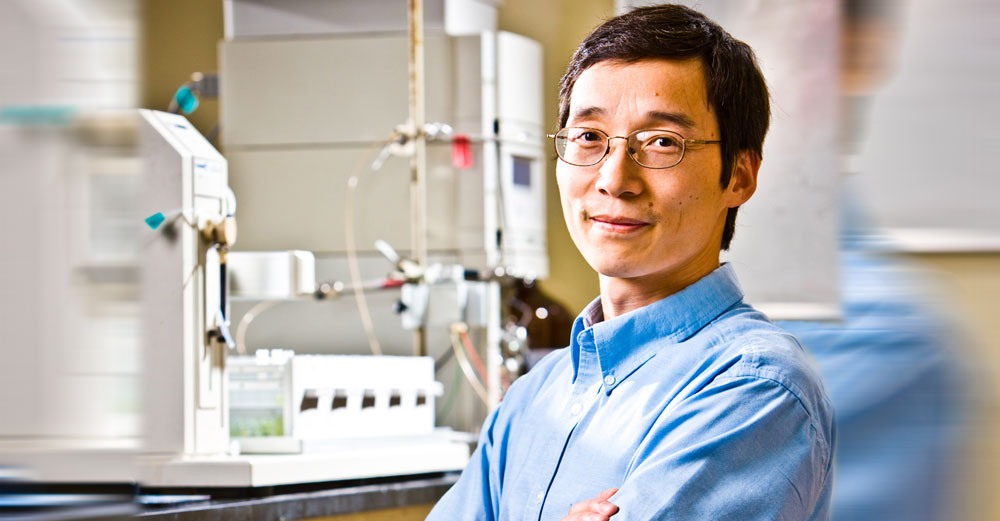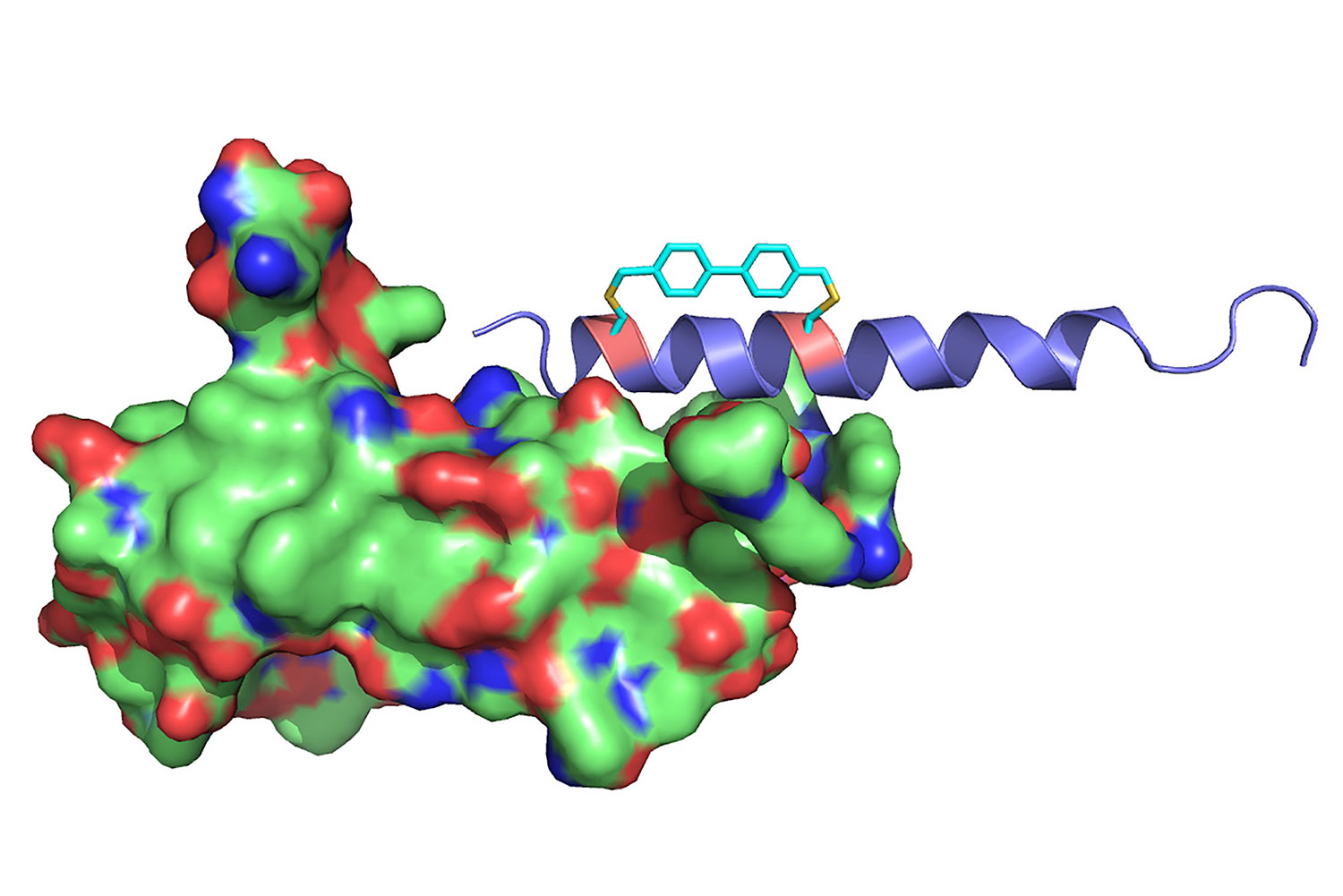
The numbers are daunting. More than 29 million people in the United States have diabetes, nearly one-tenth of the population, with the vast majority obese or overweight. At every age, the risk of developing diabetes rises dramatically with body weight, and though there’s clear need for a medication that can control body glucose and promote substantial weight loss, that treatment doesn’t yet exist.
At the University at Buffalo (UB), chemical biologist Qing Lin may have found the solution. In nine peer-reviewed papers published over the past seven years, Professor Lin, post-doctorate researcher Yulin Tian, and their collaborators at UB and California Institute for Biomedical Research have been creating technologies to improve the efficacy of oxyntomodulin, a 37-amino acid peptide hormone found naturally in the colon, where it helps increase insulin production and suppress appetite.
After UB patented a process called “chemical cross-linking,” Lin and his colleagues have been testing ways to stabilize the structure of oxyntomodulin, which is most effective when it retains its helical shape. If Lin can further increase the half-life of oxyntomodulin, the re-engineered hormone could become robust enough to be used against both diabetes and obesity, taken in once-weekly doses rather than existing medications that are injected multiple times a day.

For Lin, and for any potential backers, the key comes down to two words: potency and convenience. If Lin’s oxyntomodulin is going to leap from the academic to the pharmacy, he needs to improve it and show superior efficacy and convenience to the existing products on the market. That’s a very high bar, and before Lin can approach clinical trials, he needs to fine-tune the properties of the hormone – which is why he applied for an investment from the SUNY Technology Accelerator Fund (TAF).
“We haven’t reached the stage where we can talk face-to-face with major players in the pharmaceutical industry,” says Lin, who received his bachelor’s degree from the University of Science and Technology of China in 1994, his master’s from the University of Pittsburgh in 1997, and his doctorate from Yale University in 2000. “We have modified the hormone’s structure in important ways, but there is still a gap between where we are and where we want to be. We need more data validating this technology before we can move to a pre-clinical IND-enabling study, and ultimately to make this product widely available to patients. That’s where TAF comes in.”
Providing funds to faculty innovators, TAF investments bridge the distance that new inventions have to travel before finding the right investors, supporting scientific advances that have the greatest potential for public benefit. Using a 2016 TAF investment, Lin has hired a post-doc to synthesize new versions of the hormone and conduct new tests on these oxyntomodulin analogs. Already in the past few years, Lin’s team has succeeded in significantly increasing the potency of the hormone, enhancing the rigidity of the molecular structure, and consistently decreasing glucose levels in laboratory animals.
He’s founded a company, Transira Therapeutics, to explore the possibilities of commercializing the cross-linking patent, which could have additional applications in oncology, immunology, and treatment of infectious diseases. Building on interest from earlier stages of his work, he’s begun seeking partnerships for future testing of oxyntomodulin.
He’d like to see his lab’s oxyntomodulin reach clinical trials within the next few years and to use TAF’s investment to further develop his chemical technology to bring this project to fruition. In an $18B peptide therapeutics market, where five medications currently top $1B in annual sales, Lin knows that even small changes to peptide hormone structures, can lead to substantial gains in efficacy and convenience, which will make an enormous impact to millions of patients with diabetes.
“As chemists, we’d like to contribute to society by generating new knowledges, especially new understandings of biological mechanisms,” says Lin, who worked as a researcher at Amylin Pharmaceuticals, which developed the breakthrough diabetes medication Byetta®. “If we can use new chemistry to reach that goal, that would be even better, and if we can develop new therapies, that would be best of all. Converting basic knowledge into a viable technology that can compete in the commercial space forces all of us to think differently. It is hard work, but we are extremely motivated.”




Great solutions for Diabetes patients. Diabetes became one of the common problem in humans. There are some precautions too that are suggested by doctors.
Your are doing great job.